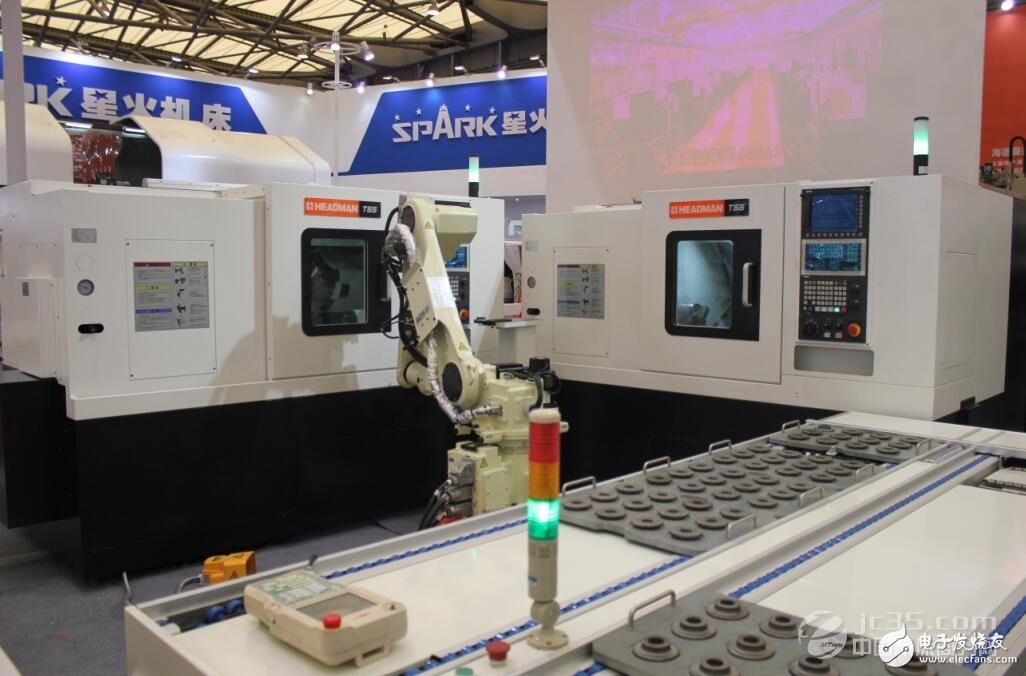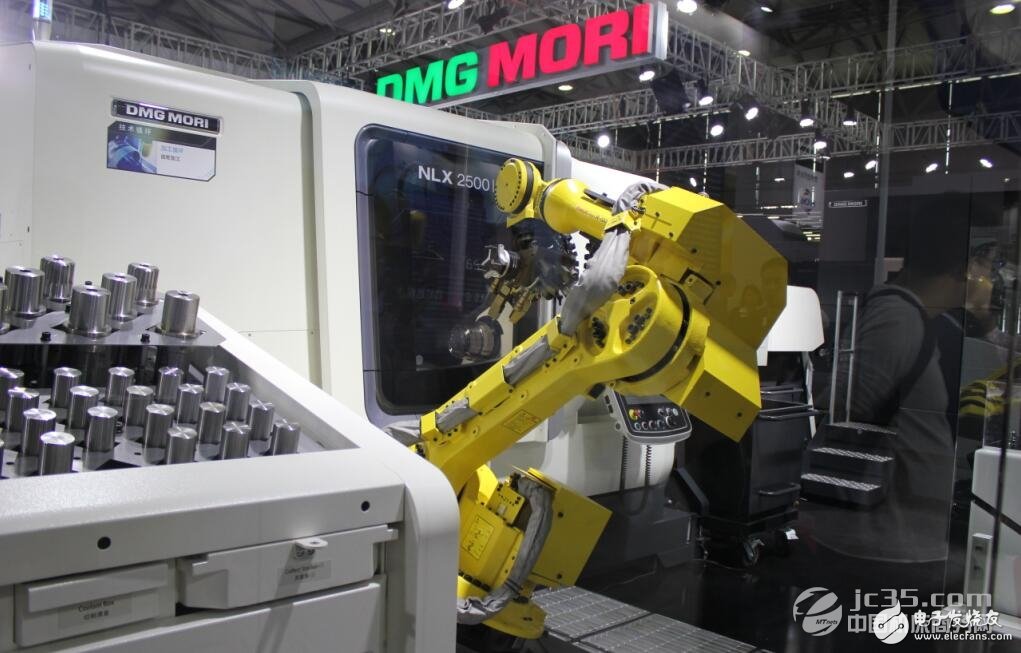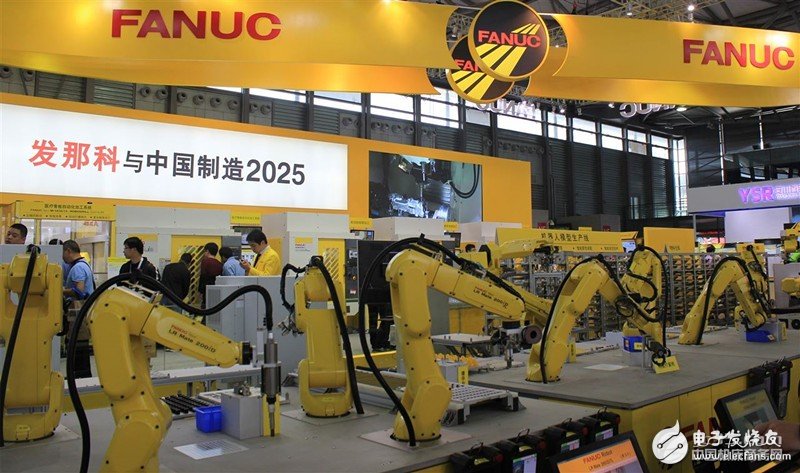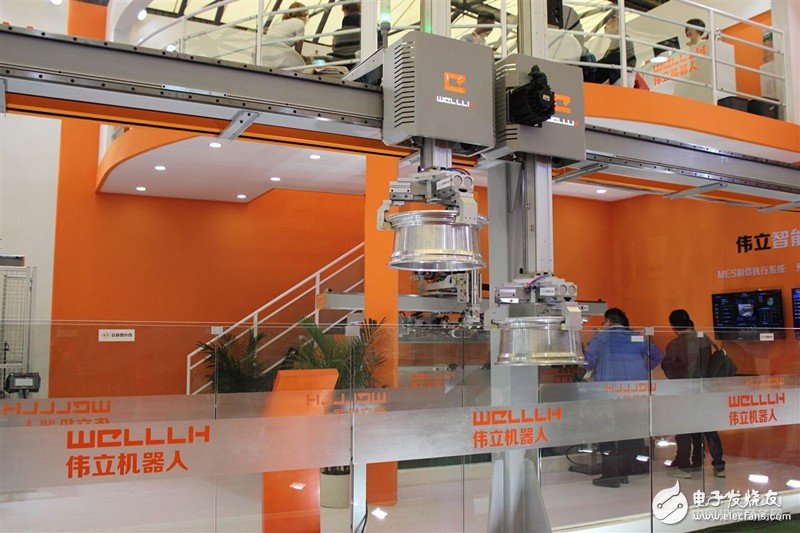If you pay attention to manufacturing-related news, you will find that a word appears frequently, it is "unmanned factory." In China, more and more companies are trying to build unmanned factories. It is foreseeable that in the near future, unmanned factories will become a new production mode, sweeping all production enterprises.

The unmanned factory is literally understood as a factory with no one involved. The relevant data defines it as follows: “An unmanned factory is also called an automated factory, a fully automated factory. It means that all production activities are controlled by electronic computers, and the first line is equipped with robots without the need for workers.â€
From the above definition, the unmanned factory is to hand over the work of the people to the machine. It sounds simple, but to achieve this, the technology involved needs to be very complex. For example, the deployment of the entire production process of an unmanned factory is done by a computer. And computers must replace people's regulation of the entire production, it needs a very powerful command system. This type of production simulation is very complicated, and avoiding errors can require countless calculations. Therefore, the surface of the unmanned factory is to remove people's participation in the production process. In fact, behind the scenes are the interaction of countless high-end intelligence and technology.

Heidemann: Robot + Machine Mode
Advantages of unmanned factoriesMore and more companies are trying to unmanned factories, not because it looks cool. In fact, the advantages of an unmanned factory are its attractive places. So what are the advantages of unmanned factories?
First, the province manpowerSince it is called an unmanned factory, no one in the production process or the reduction of people's participation is definitely its biggest advantage. People are highly motivated and creative in production. But in contrast, people also have high instability and limitations. In the manufacturing industry, especially in the production of assembly lines, the demand for human initiative and creativity is greatly reduced, and the problems of human instability (such as error prone) and limitations (such as labor efficiency) are more prominent. Advantage.
In addition, with the development of society, laborers are increasingly resentful of monotonous and labor-intensive work, the number of related practitioners is difficult to guarantee, and manpower still has problems such as low efficiency and high cost. The emergence of unmanned factories reduces the dependence of production on manpower. Enterprises can solve the problem of employment, and some workers can also be freed from the more dangerous and heavy work. Regardless of the others, from this perspective alone, the emergence of unmanned factories is a good thing for companies and related practitioners.

Demagji machine with robot for production
Second, improve quality and efficiency, reduce costsCompared with traditional factories, the effect of improving quality and reducing costs is remarkable. Now many companies that have tested water unmanned factories have already tasted the sweetness of this aspect. Xiaobian sees an example: Changying Precision is an early attempt to build an unmanned factory. Considering the cost and risk issues, Changying Precision first tested the “robot substitution†and tried to replace it with a polishing robot. Workers engaged in polishing operations in the production of metal precision components. Before the production of robots was used, Changying Precision needed to spend 10,000 yuan each month on an experienced polishing master. With the participation of robots, the efficiency is 2.5 times that of the original, and the product qualification rate is also higher. According to the company's output value, it only takes one year to return. That is to say, in the production after one year, the original labor cost will be transformed into corporate profits, which will undoubtedly make the company more competitive in similar products.
It should be noted that the above example is only a robot used in a production process, not a truly unmanned factory. But its cost reduction has been amazing. It is conceivable that if you completely use unmanned factory production, the cost savings will be quite large.
Unmanned factory impactThe impact of the use of unmanned factories is comprehensive and far-reaching, and can be roughly divided into the following three aspects.
First, for the workers. The use of unmanned factories will undoubtedly have an impact on the individual labor and social labor structure. For individuals, engaging in related industries may face unemployment due to the emergence of unmanned factories, such as workers engaged in traditional loading and unloading, loading and unloading, polishing and other types of work. For the entire labor market, it is necessary to adjust the labor structure to adapt to the needs of unmanned factories.
Although the emergence of unmanned factories has caused some jobs to be no longer carried out by human resources, this does not mean that these workers will face unemployment. Ma Yun once said that the mission of robots should be to help human beings do things that humans can't do, not to replace humans. In the same way, unmanned factories are not replacing workers, but liberating these workers from their original work and doing other more creative things. If the robot has been polished, does it need someone to check it? Does this create a new job? Some companies that have used unmanned factories also admit that they will not expel workers, but they also need workers to adapt to new job requirements.
Second, for the enterprise. The use of unmanned factories has undoubtedly greatly improved the production efficiency and production quality of the enterprise. As mentioned above, it will not be described here. In addition to the advantages of improving quality and efficiency, companies also need to pay attention to the risks and challenges of unmanned factories. If the number of people under the unmanned factory is greatly reduced, how should these personnel be resettled, and how the enterprise management should adapt to the new model. Another example is how companies can maintain their competitive advantage in their peers when they are popularized. How to balance the high upfront costs of unmanned factories, what if the production scale is small and it is difficult to adapt to this model? These problems require companies to think and solve.
Third, the industry. If an industry uses an unmanned factory, the socially necessary labor time and social productivity of the industry will inevitably change. Enterprises that can adapt to the whole industry will stay, and enterprises that cannot change will face elimination. The pattern of the entire industry will also change accordingly. For example, small-scale production enterprises and low-end production enterprises are more likely to face elimination. How the entire industry enters a benign development model in this situation is also worth considering.

FANUC Robot
Is the unmanned factory far from us?The unmanned factory is far from us, saying that it is not close. Why do you say that? Because many companies are now trying to build unmanned factories and there are many on-line productions. It can be said that unmanned factories have already participated in manufacturing production. However, many of the current unmanned factories are at the initial stage, and there are some technical problems that need to be solved.
For example, the unmanned factory is conceptually conceived to be that the entire production process is all computer-operated, intelligently selecting the optimal processing solution, and being able to flexibly cope with various problems that may arise or may arise during processing. To achieve these functions, you need to have a strong virtual factory to back it up. At present, these are still very difficult for enterprises.
At this stage, the problems that Chinese enterprises need to face to build an unmanned factory are multifaceted. On the one hand, we must overcome related technical problems, such as the background operating system mentioned above and supporting industrial robots and machine tools. On the other hand, due to the late start of our country, the experience in the establishment of unmanned factories is relatively scarce. From the transition from a traditional factory to an unmanned factory, personnel issues and internal company model adjustments also need to be explored and researched.

Weili Robot
Unmanned factories are still in their infancy in China, and there are still many difficulties to overcome. Now, it may take some time to get away from the unmanned factory, but the future of the unmanned factory is still worth looking forward to.
Vacuum UV Curing Machine,Vacuum Curing Machine,UV Machine
Shenzhen Jianjiantong Technology Co., Ltd. , https://www.jjtscreenprotector.com